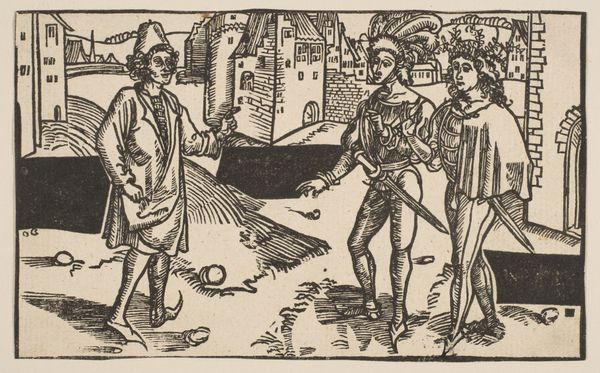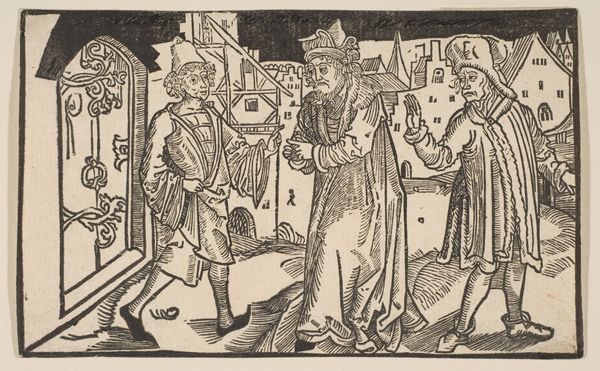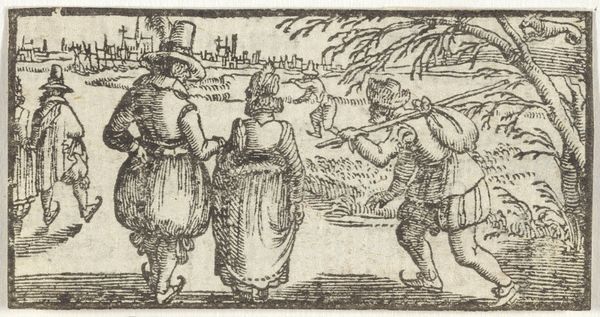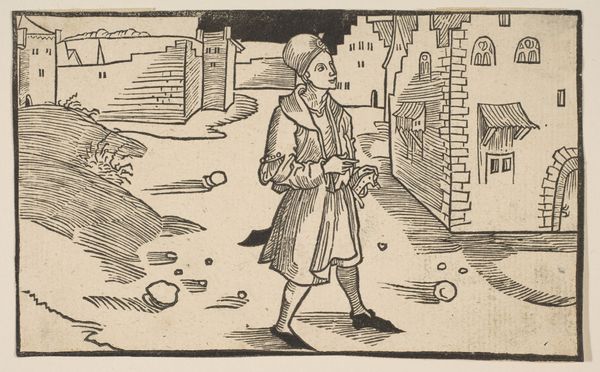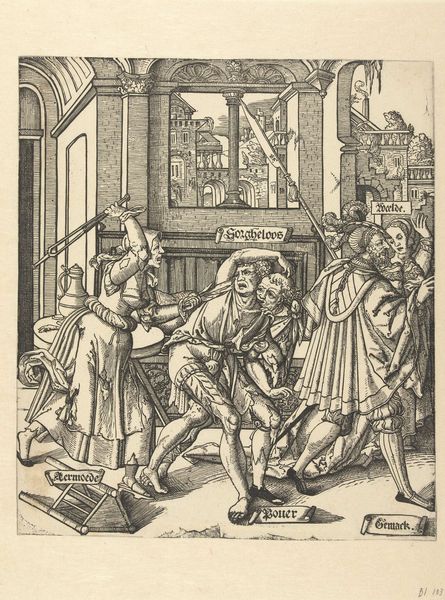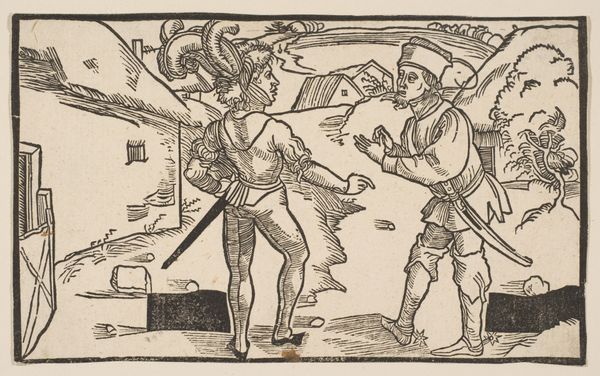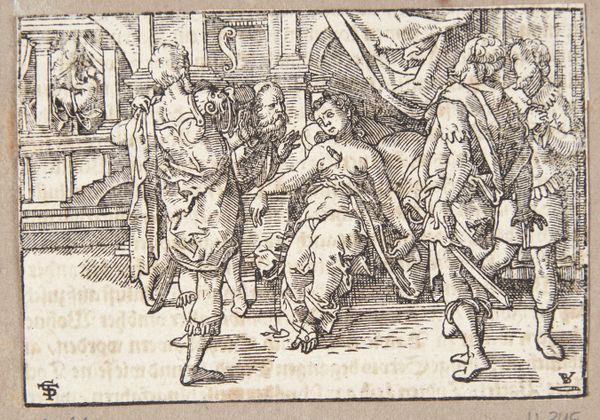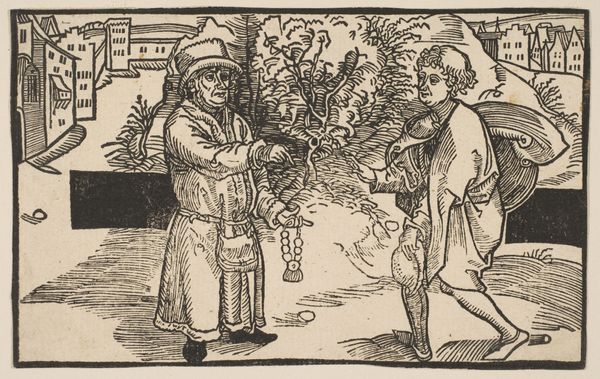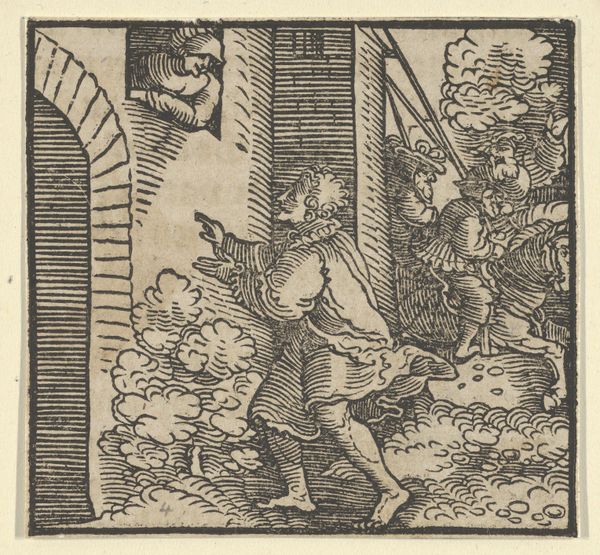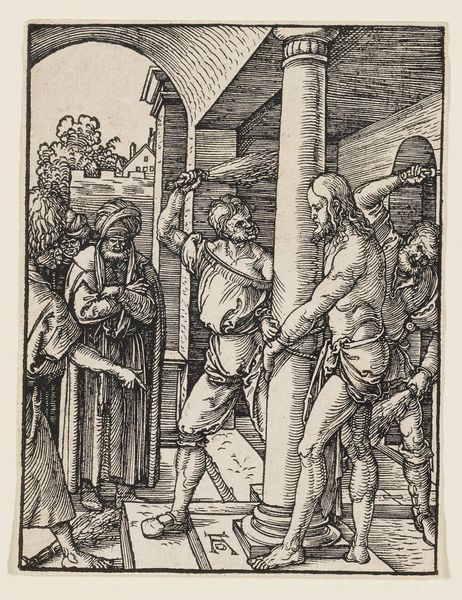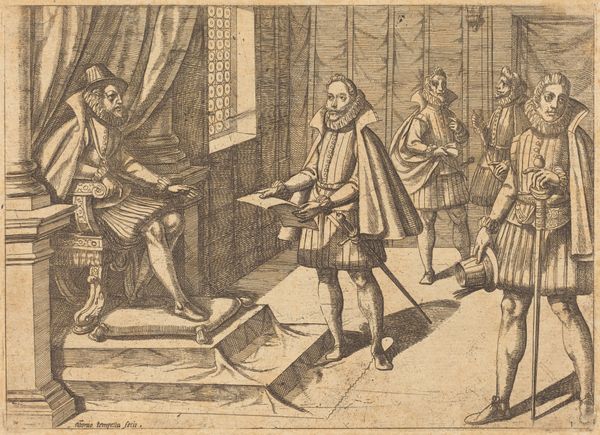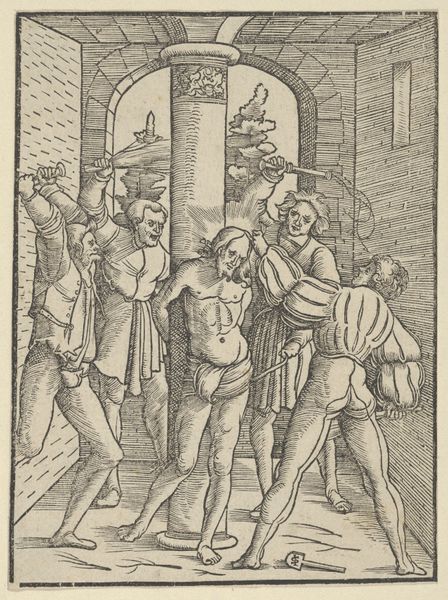
Eunuchus, from The Comedie of Terence, 19th century reprint 1485 - 1528
0:00
0:00
drawing, print, woodcut
#
drawing
#
narrative-art
#
pen drawing
# print
#
pen illustration
#
pen sketch
#
figuration
#
woodcut
#
men
#
line
#
northern-renaissance
Dimensions: sheet: 3 1/2 x 5 5/8 in. (8.9 x 14.3 cm)
Copyright: Public Domain
Editor: This is a woodcut from 1485-1528 titled "Eunuchus, from The Comedie of Terence", likely by Albrecht Durer. It depicts two men in an outdoor setting. The line work is really striking, it creates depth with just black and white. What's your take on this piece? Curator: From a materialist perspective, consider the production of this image. A woodcut demands labor, skill, and specific tools. The act of carving the block itself imposes a structure. How might the limitations of the wood influence the artist's decisions regarding line, texture, and the overall composition? Editor: I suppose the stark contrast comes from the wood itself – either you carve away, or you don’t, which leaves very little room for midtones like in drawing or painting. Curator: Exactly. The use of wood as the medium is not neutral. It speaks to a particular history of printmaking and dissemination. How does this accessibility to printed images through reproducible woodcuts influence its meaning and function? Is it ‘high’ art, or does it challenge that very concept by circulating amongst a wider audience? Editor: So, it democratizes the artwork by making it more affordable, even if it sacrifices the finer details? Curator: Precisely! And consider the reprint itself in the 19th century. It points to changing markets, preservation, and ideas surrounding authorship and originality. How does the context of reproduction alter our understanding of the original work and its purpose? Editor: That's a really different way of approaching this piece. It shows that the value and accessibility of a work changes across time based on the means of production. Curator: Indeed. By thinking about material conditions, we move beyond simply identifying style and enter into questions of social access and cultural value. I am always impressed by your insight and enthusiasm, even for less well-known art!
Comments
No comments
Be the first to comment and join the conversation on the ultimate creative platform.
